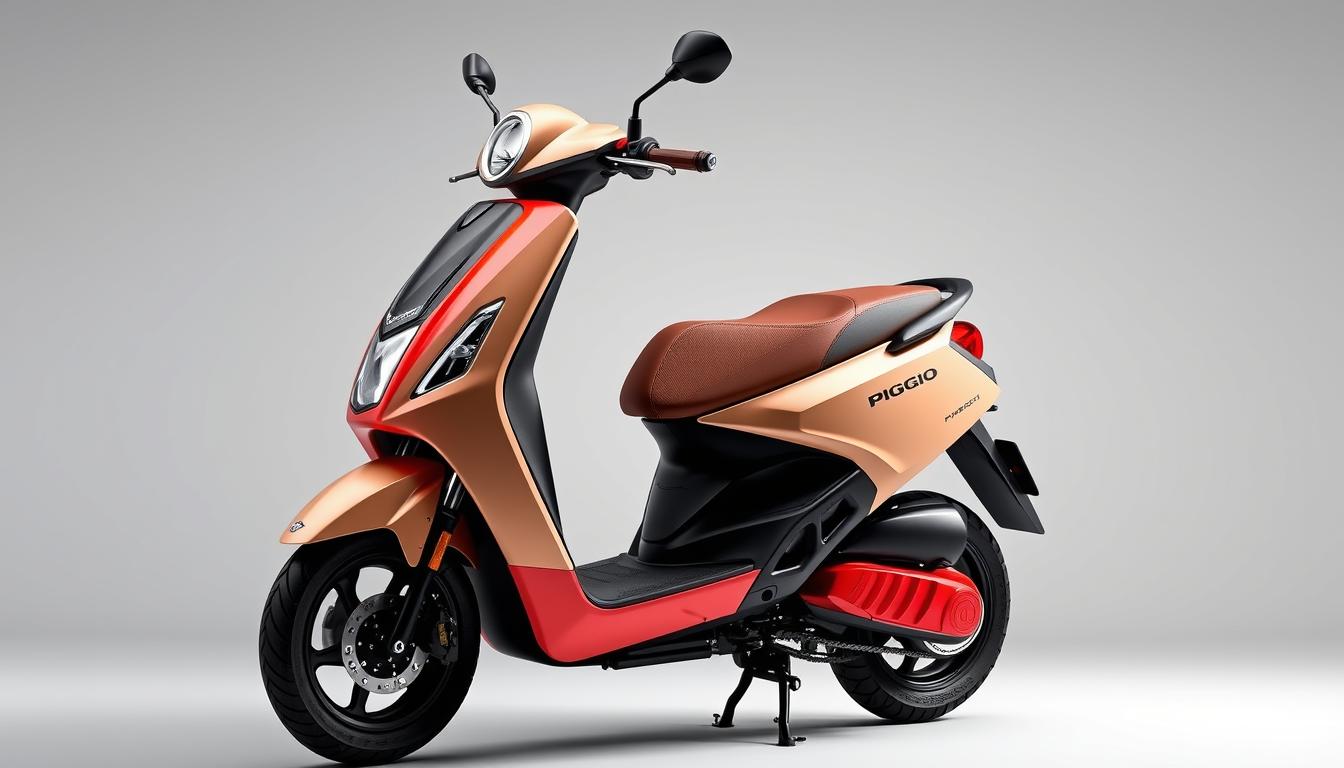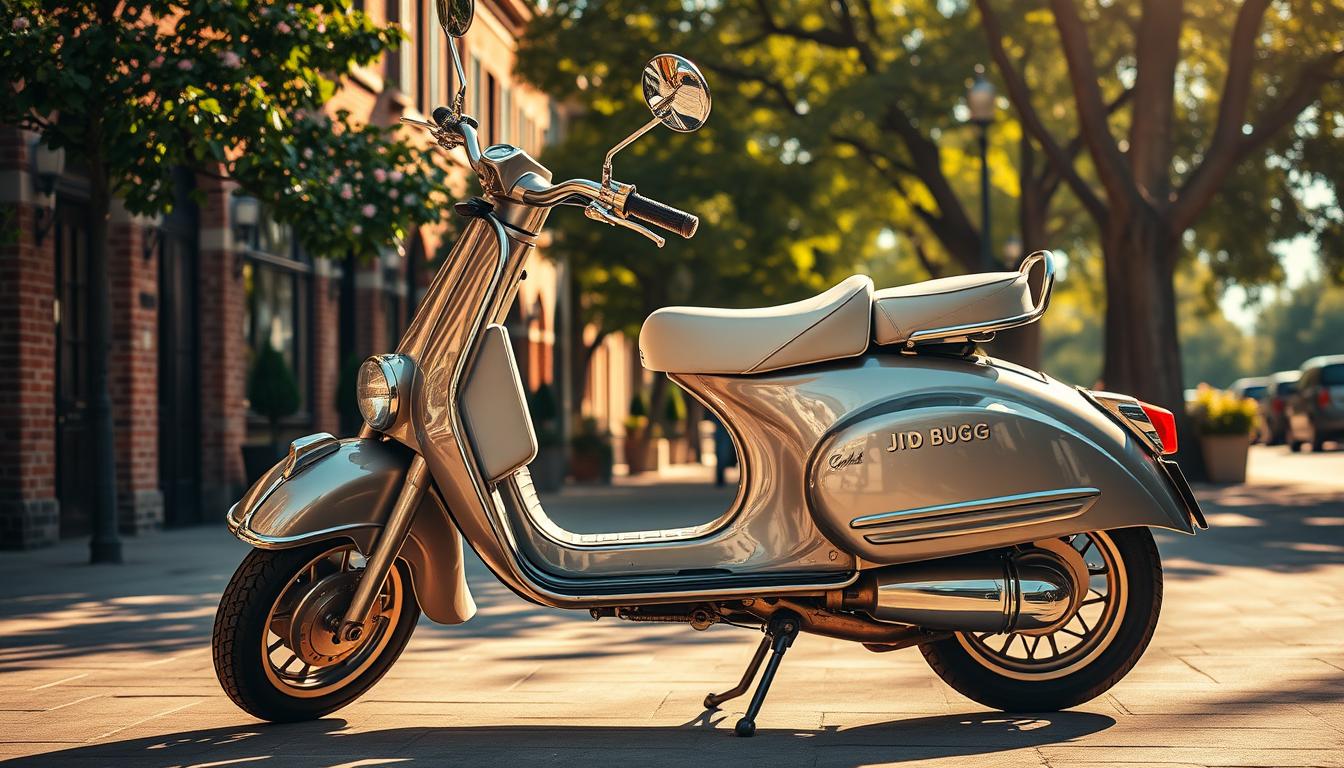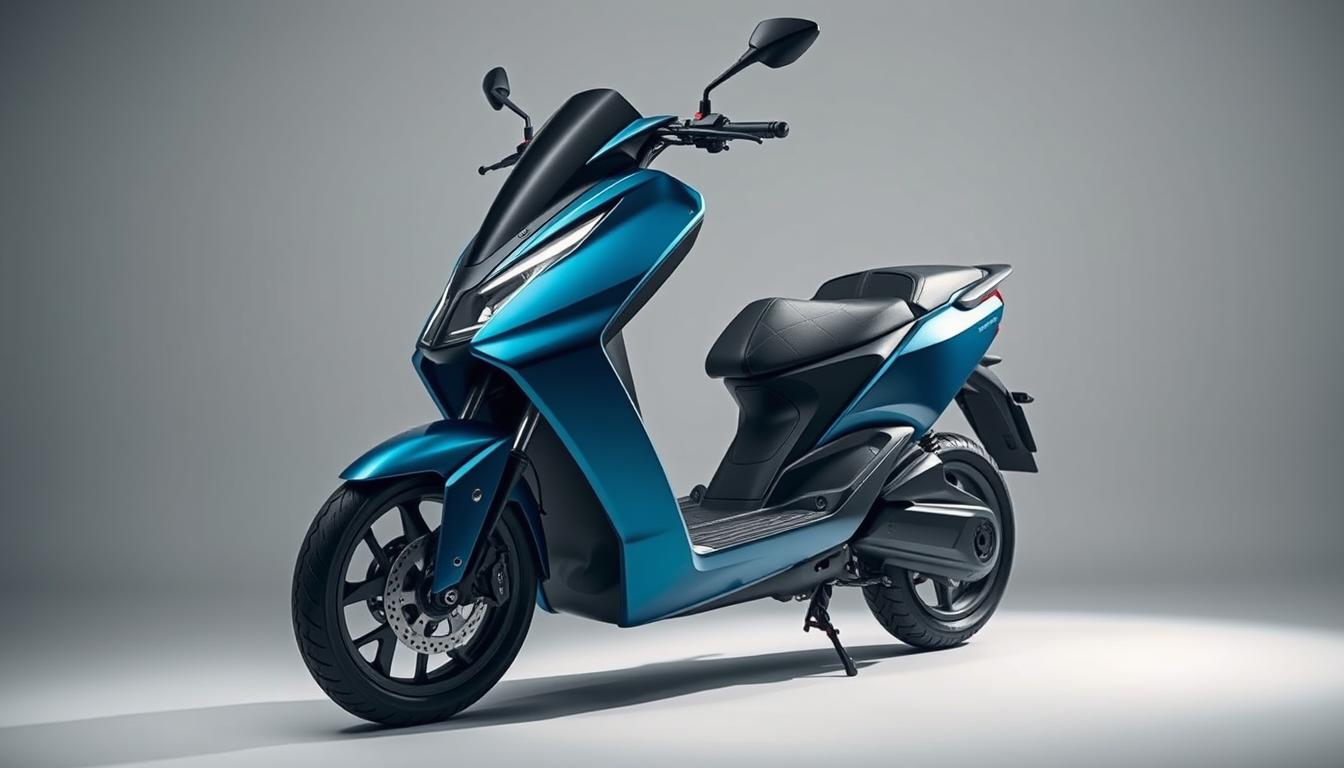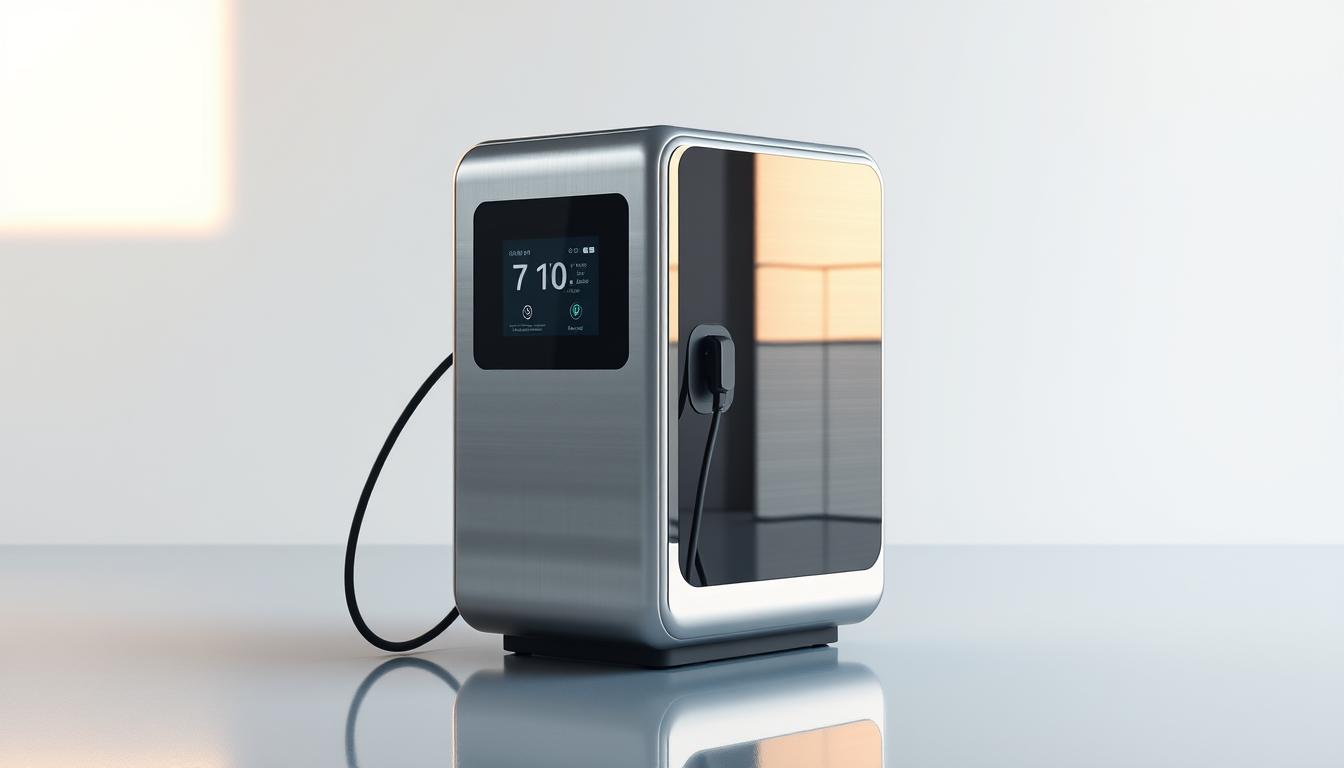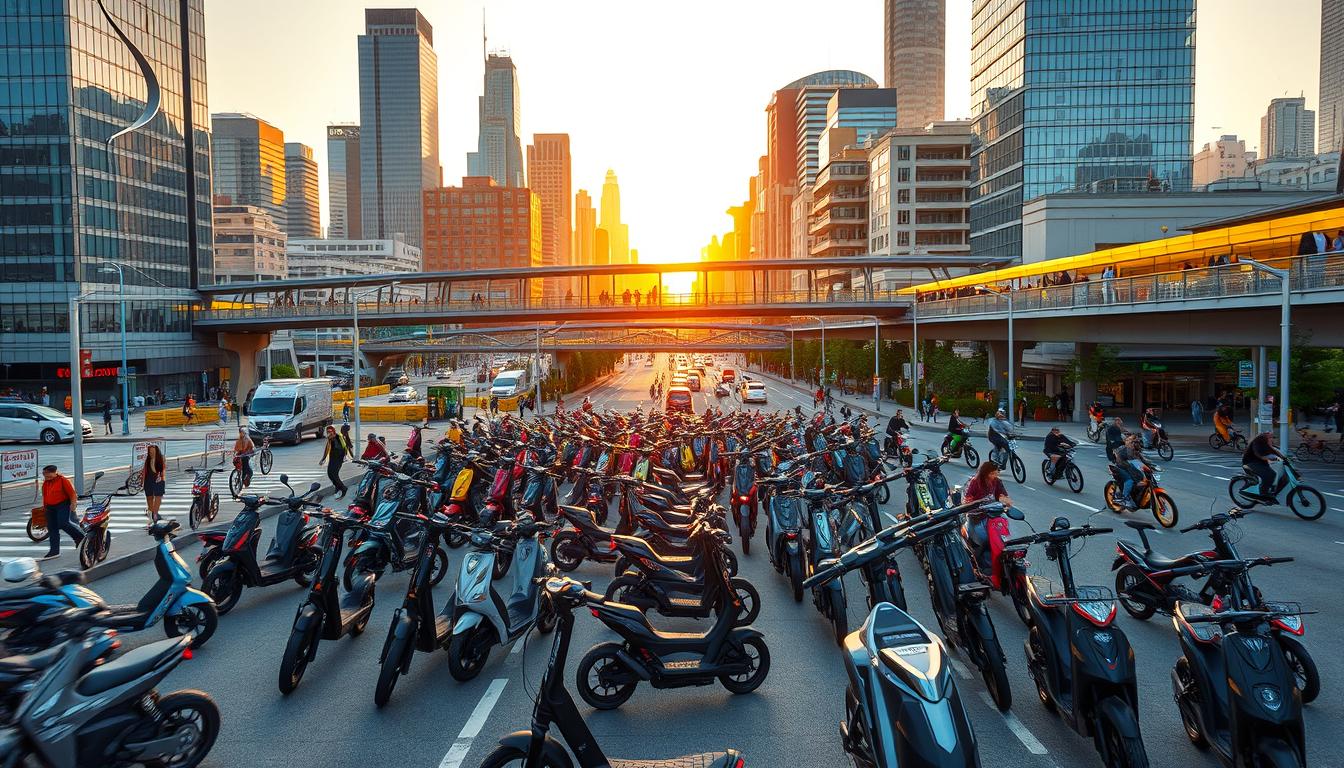
Dual Motor Electric Scooter: High-Speed & Long-Range
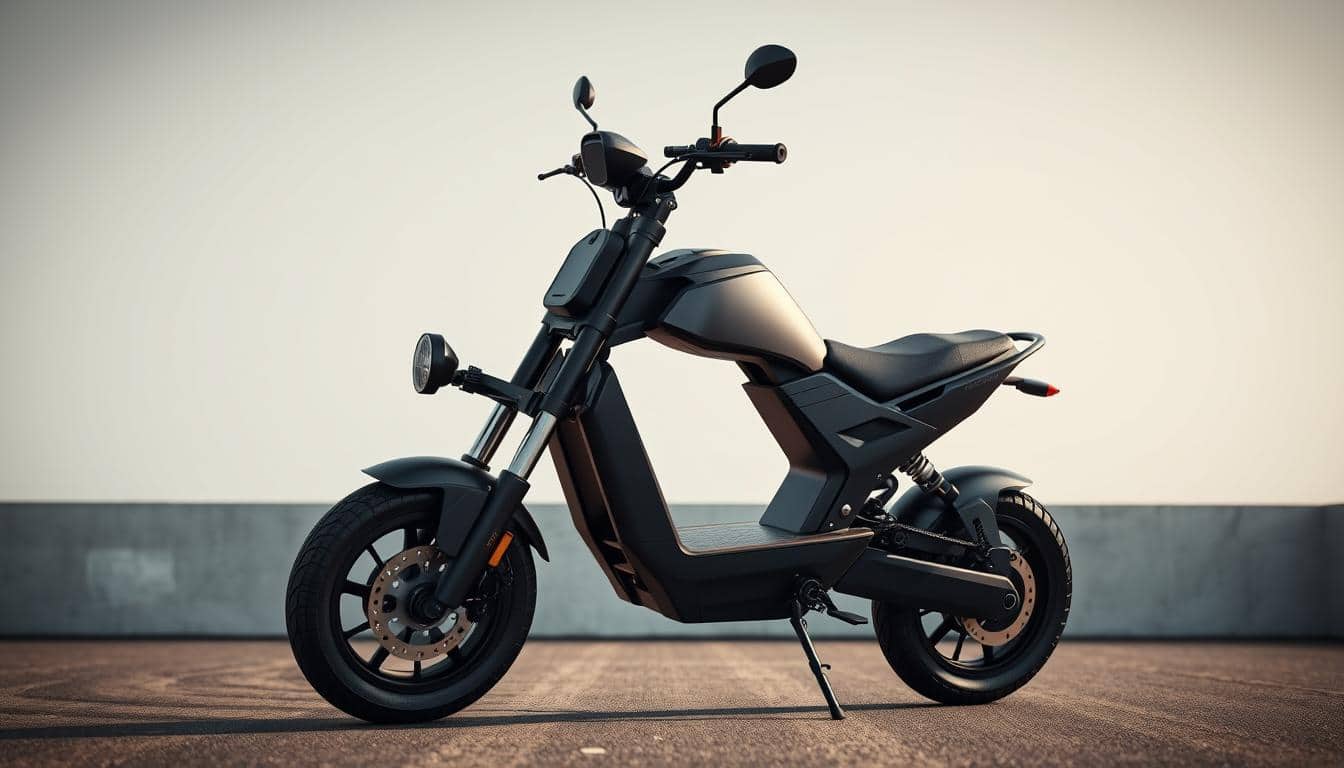
For those seeking power and efficiency, high-performance rides like the dual motor electric scooter deliver unmatched speed and distance. Models such as Teewing’s boast 28 mph top speeds, while the Apollo Pro pushes boundaries with 60 mph capabilities. These innovations redefine urban commuting and off-road adventures. The market is seeing a surge in options, including remarkable models like the Mercedes premium electric scooters, which combine luxury with high-performance features. These scooters not only offer impressive acceleration but also prioritize comfort and design, making them suitable for both city streets and rugged trails. With such advancements, riders are empowered to explore their surroundings like never before, all while enjoying a sleek, eco-friendly mode of transport. With features designed for the ultimate riding experience, the Dualtron Storm Limited stands out as a pinnacle of modern engineering. Its advanced suspension system and powerful battery ensure a smooth journey, even on rugged terrains. Coupled with the dualtron storm limited features, riders can enjoy enhanced stability and control, making it a top choice for thrill-seekers and commuters alike.
Riders enjoy extended range miles, with real-world usage offering 21–43 miles per charge. Beyond performance, these vehicles cut carbon emissions and fuel costs. Fluidfreeride’s community data highlights 50,000+ units sold, saving $3M annually in gas expenses.
With dual motors, stability and acceleration excel, making every ride smooth and thrilling. Whether for daily commutes or weekend exploration, these scooters blend eco-friendliness with cutting-edge technology. The advanced features of these scooters ensure a remarkable user experience, offering responsive handling and impressive speed. In the Gotrax XR Elite review, riders consistently praise its remarkable performance and innovative design. This perfect combination of functionality and style makes it a top choice for both casual users and serious enthusiasts. These scooters also boast impressive range and quick charging times, ensuring you can travel further without long breaks. The mi electric scooter pro features enhanced braking systems and customizable settings, allowing riders to tailor their experience for maximum comfort and safety. With sleek designs and smart connectivity options, they stand out as a stylish choice for environmentally conscious riders. Designed to tackle diverse landscapes, this electric scooter for rugged terrain ensures that adventure seekers can confidently navigate through challenging paths. Its robust build and enhanced traction allow for a seamless transition from city streets to off-road trails, offering a versatile riding experience. Embrace the thrill of exploration while contributing to a greener planet with each journey.
Why Choose a Dual Motor Electric Scooter?
Power and control come together in models designed for challenging terrains and rapid acceleration. Riders enjoy smoother climbs and quicker response times, thanks to advanced engineering.
Double the Power for Steep Hills and Speed
Two motors mean double the torque. The Apollo Phantom conquers 25° inclines effortlessly, while the SPLACH Twin rockets from 0–25 mph in just 6.1 seconds. Single-motor models can’t match this performance.
Enhanced Control and Stability
Features like swingarm suspension (SPLACH Mukuta) and ergonomic handlebars keep rides steady. Hydraulic brakes on the Wolf King GT ensure a 2.1m stopping distance from 15 mph—critical for safety.
All-weather reliability? The Apollo City Pro’s IP66 rating handles rain and dust. Whether climbing hills or navigating city streets, dual motor systems deliver precision and confidence.
Top 6 Dual Motor Electric Scooters in 2024
2024 brings exciting options for riders who crave speed and reliability. From budget-friendly picks to high-performance beasts, these models excel in power, range, and innovation. Here’s a breakdown of the year’s best.
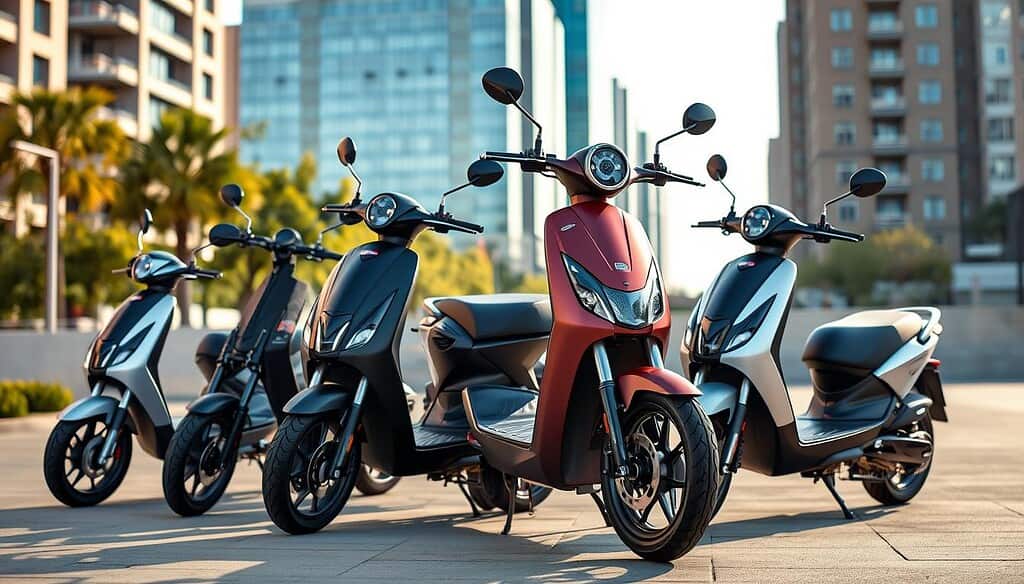
Best Budget Pick: SPLACH Twin
At $999, the SPLACH Twin delivers 28 mph and weighs just 53 lbs. Its lightweight frame and responsive acceleration make it ideal for urban commutes. The price tag doesn’t skimp on quality.
Best Overall Value: SPLACH Mukuta
The Mukuta shines with a *removable battery* that doubles as a power bank. With 39-mile range miles, it’s perfect for longer trips. Priced mid-range, it balances features and affordability.
Best for Commuting: Apollo City Pro
IP66 waterproofing and *self-healing tires* ensure durability. It hits 32 mph and handles rain effortlessly. Commuters love its low-maintenance design and sleek look.
Best for Heavy Riders: Apollo Phantom
Supporting 300 lbs, this model boasts 41 mph and *quadruple spring suspension*. It’s built for stability, even on rough terrain. A top choice for taller or heavier users.
Best Off-Roader: Mantis King GT
With 10-inch off-road tires, it tackles trails easily. Holiday pricing drops it to $1,899. Rugged yet agile, it’s a thrill-seeker’s dream.
Best for Speed: Wolf King GT
The 43 mph champion packs a 72V battery. At $2,999, it’s a splurge—but unbeatable for adrenaline junkies. Hydraulic brakes ensure safety at top speeds.
Key Features to Look for in a Dual Motor Scooter
Not all models are equal—focus on these must-have components. The right specs ensure speed, durability, and comfort, whether you’re commuting or tackling trails.
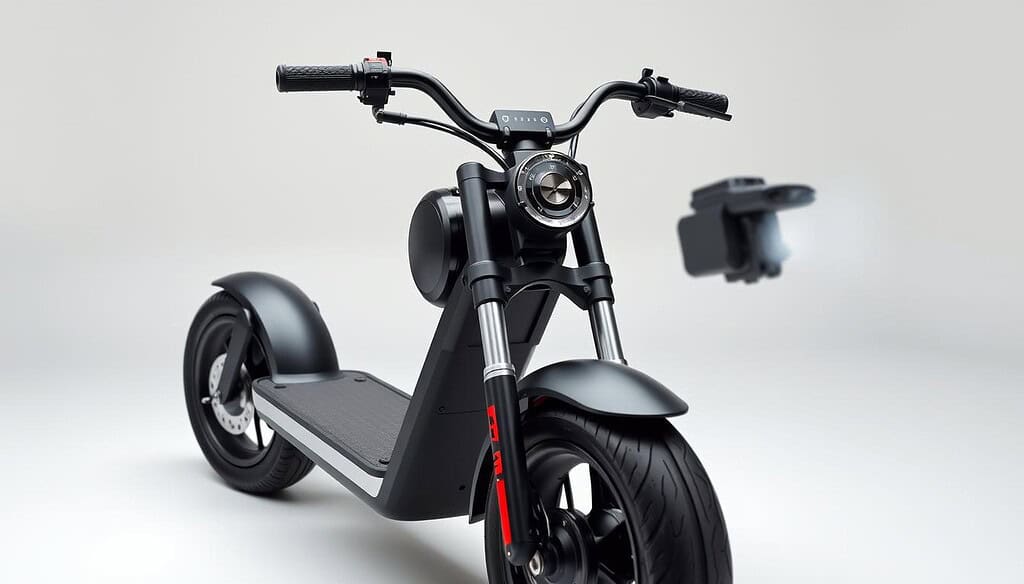
Motor Power and Peak Performance
High-wattage systems dominate steep inclines and acceleration. The Wolf King GT delivers 3,000W peak power, while budget picks like the SPLACH Twin offer 1,000W nominal output. More watts mean faster hill climbs and smoother starts.
Battery Life and Range per Charge
Compare voltage and capacity for long rides. The Apollo Pro’s 72V 40Ah battery outlasts competitors, while the SPLACH Mukuta’s 48V 15.6Ah version suits shorter trips. Look for 500–1,000 charge cycles (like Teewing’s) for longevity.
Suspension and Tire Types
Suspension dictates comfort:
- Apollo Phantom: Quadruple springs absorb bumps
- SPLACH Twin: Swingarm design for agile turns
Pair with the righttires:
- Commuting? Tubeless (Apollo City Pro) resists punctures
- Off-road? Knobby (Mantis King GT) grips dirt
Regenerative braking, like the Apollo Phantom’s 10% battery recovery, adds efficiency. Prioritize these features to match your riding style.
Dual Motor vs. Single Motor: Which Is Right for You?
Riders face a key decision: more power or simpler design? Models with dual motors excel on steep hills and rough terrain, while single-motor options prioritize weight savings and affordability. Fluidfreeride data shows dual systems add 15–20 lbs but double hill-climbing ability.
When to Opt for Dual Motors
Choose two propulsion systems for challenging rides. The Apollo Phantom tackles 25° inclines effortlessly, and the Mantis King GT dominates off-road trails. Heavy riders (300+ lbs) benefit from extra torque and stability.
Speed lovers gain too—dual setups average 28–43 mph, like the Wolf King GT. The trade-off? Higher price tags start at $999.
Single Motor Advantages for Lightweight Needs
For city commutes, single motors shine. The SPLACH Turbo Plus weighs just 40 lbs and delivers a 33-mile range—ideal for shorter trips. At $600, it’s budget-friendly.
Maintenance costs drop with fewer parts. Riders prioritizing portability and price over raw power will prefer this setup.
How Dual Motors Improve Speed and Acceleration
Speed enthusiasts know that milliseconds matter when launching from a standstill. With two propulsion systems, rides like the SPLACH Mukuta and Apollo Phantom deliver explosive starts and seamless climbs. The secret? Advanced engineering that optimizes torque and response times.
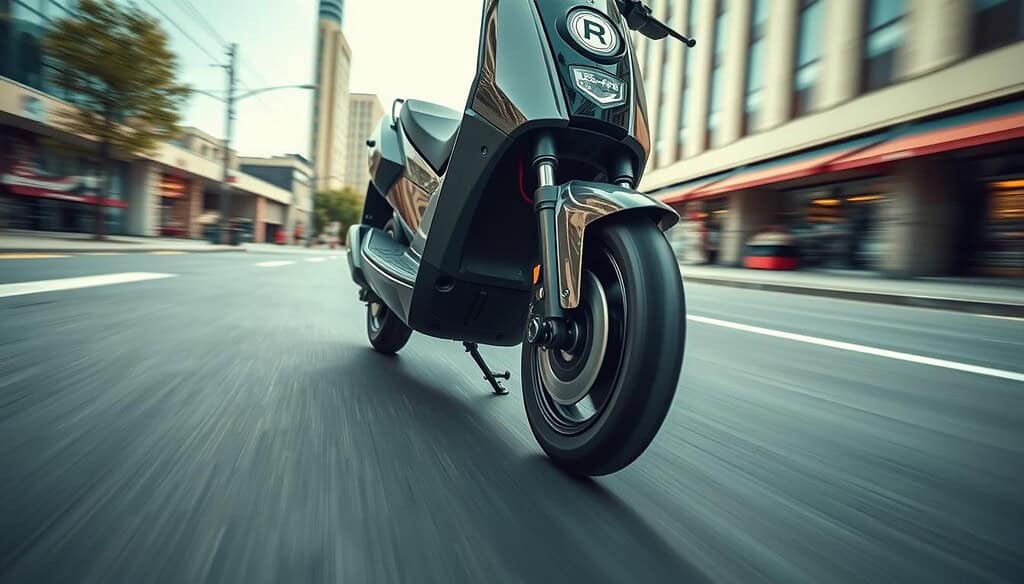
Real-World Speed Tests
The SPLACH Mukuta rockets from 0–15 mph in just 2.7 seconds, while the Wolf King GT hits 25 mph in 4.5 seconds. These benchmarks highlight how dual setups outperform single-motor models in raw acceleration.
Steering geometry also plays a role. The SPLACH Twin’s 42.1″ handlebar height offers tighter turns, whereas the Mantis King GT (41.3″) prioritizes stability at high speeds.
Controller Response and Handling
Sine-wave controllers, like the Apollo Phantom’s, ensure smoother throttle transitions. Riders experience no jerky starts—just linear power delivery.
For safety, braking systems are equally critical. The Teewing MACH1’s hydraulic brakes achieve a 2.8m stopping distance from 15 mph. Regenerative tech also recovers energy, maintaining speed efficiency during rides.
Long-Range Capabilities of Dual Motor Scooters
Going the distance requires smart battery choices and riding habits. Modern models like the Apollo Pro deliver 60 range miles thanks to advanced power systems, while lighter options balance portability and performance.
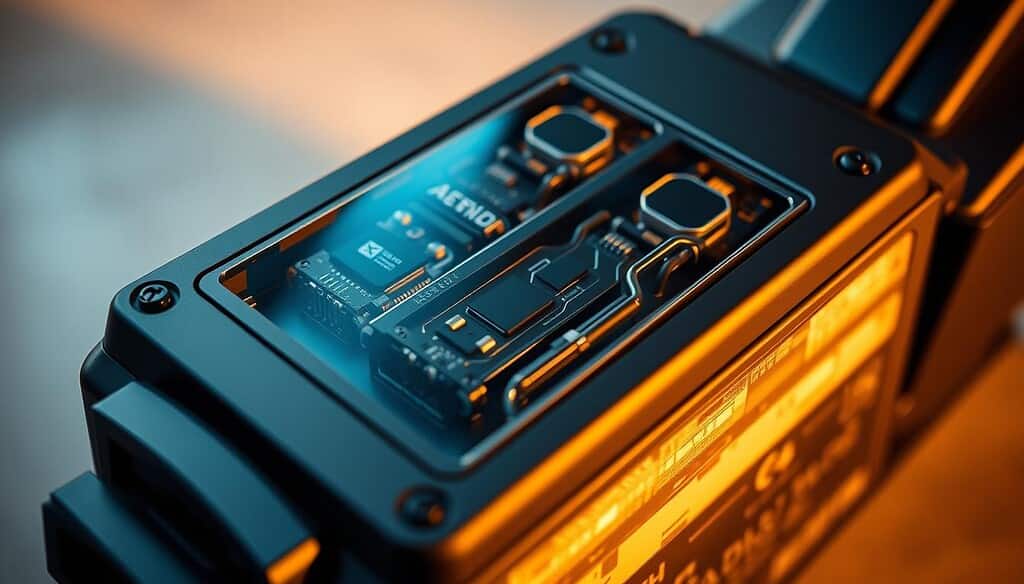
Battery Technologies That Maximize Miles
Higher voltage means more range miles. Compare the SPLACH Mukuta’s 48V system (39 miles) to the Apollo Pro’s 72V 40Ah setup (60 miles). Detachable batteries, like the Mukuta’s 749Wh pack, add versatility.
Fast-charging tech slashes downtime. The Apollo Pro refuels in 6 hours—half the time of standard chargers. Heavier models (77 lbs) may sacrifice portability but offer extended range.
Tips to Extend Your Scooter’s Range
- Use *eco mode* for a 20% boost in range miles.
- Maintain tire pressure—underinflated tires drain battery life faster.
- Real-world range often falls short. The Apollo City Pro claims 43 miles but averages 27.
Weight matters too. The 53 lbs SPLACH Twin sips energy compared to bulkier rivals. Pair these tricks with regular maintenance to keep your rides long and efficient.
Safety Features You Shouldn’t Compromise On
Riding safely means prioritizing features that protect you on every journey. From responsive braking systems to advanced visibility tech, the right components prevent accidents and boost confidence.
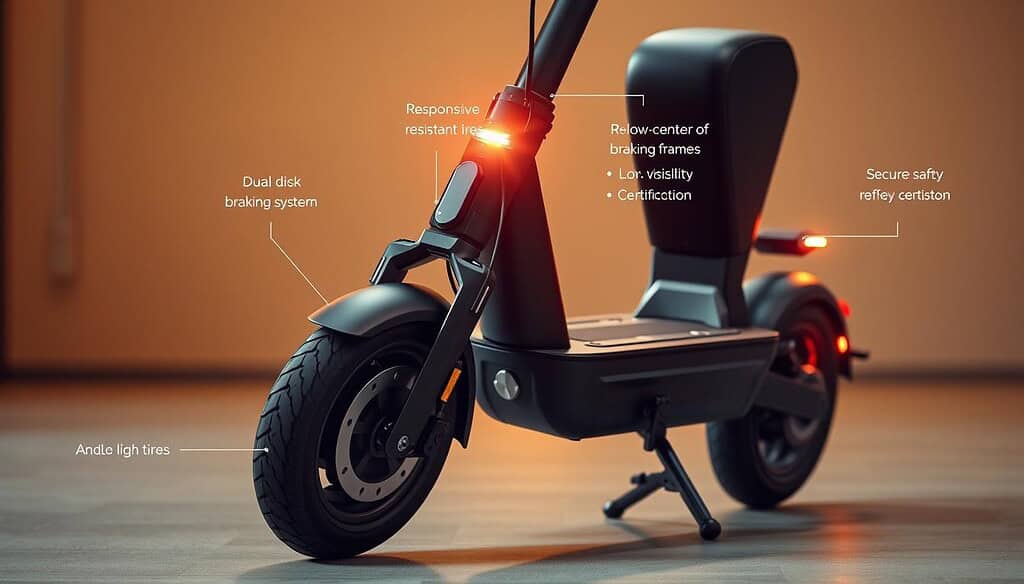
Hydraulic Brakes vs. Electronic Systems
The Wolf King GT’s hydraulic brakes deliver a 2.1m stopping distance—critical for high-speed safety. Meanwhile, the SPLACH Twin uses electronic + drum brakes, which are lighter but less precise in wet conditions.
For steep hills, hydraulic systems outperform. They’re standard on premium models like the Apollo Phantom, ensuring consistent power even on 25° inclines.
Lighting and Visibility for Night Rides
Apollo City Pro’s handlebar LEDs and turn signals make night rides safer. The Teewing MACH1 adds a 1,200-lumen headlight, illuminating dark streets effectively.
IP ratings matter too. The Apollo City Pro’s IP66 rating shrugs off rain, while the Mantis King GT’s IP54 is better suited for dry trails.
Anti-Theft and Tire Safety
The SPLACH Mukuta’s NFC locking prevents theft with a tap. For tires, the Apollo City Pro’s *self-healing* design resists punctures, while off-road treads (Mantis King GT) grip loose terrain.
Every detail—from lighting to tires—ensures a secure ride. Never underestimate these lifesaving features.
Best Dual Motor Scooters for Off-Road Adventures
Off-road adventures demand rugged performance and smart engineering. The right design combines durable tires, advanced suspension, and weatherproofing to tackle trails confidently. Models like the Mantis King GT and Apollo Phantom lead the pack with specialized features.
Tire Traction and Suspension Needs
Knobby tires excel on dirt. The Mantis King GT’s 10-inch pneumatic setup grips uneven terrain, while solid tires (SPLACH Mukuta) resist punctures on rocky paths. Pair them with the right suspension for comfort.
The Apollo Phantom’s *quadruple spring* suspension smooths out bumps, ideal for aggressive rides. Lighter models like the 53 lbs SPLACH Twin use swingarm designs for quick turns.
Water Resistance Ratings Explained
IP ratings matter off-road. The Mantis King GT’s IP54 handles splashes, but the Apollo Phantom’s IP66 survives heavy rain. Riders should match protection to their environment.
Weight impacts portability. At 77 lbs, the Apollo Phantom prioritizes stability, while the SPLACH Twin (53 lbs) suits those who value agility. For a limited time, the Mantis King GT drops to $1,899—perfect for holiday upgrades.
Portability and Folding Mechanisms
Portability makes daily travel effortless, especially when your ride folds neatly into tight spaces. Lightweight options like the 53 lbs SPLACH Twin or the 65 lbs Apollo City Pro balance durability with ease of carry. For urban riders, every pound matters.
Weight Considerations for Daily Commuters
The SPLACH Twin’s 53 lbs frame shines for subway commutes, while the Apollo City Pro’s 65 lbs build suits those prioritizing weatherproofing. Telescopic stems reduce length by 15%, fitting in car trunks or under desks.
Compact Designs for Easy Storage
Folding mechanisms vary. The SPLACH Twin uses a cantilever design, while the Apollo Pro features a one-click fold. Both save space in apartments or offices.
For added convenience, the SPLACH Mukuta’s detachable battery charges at work. Deck sizes also matter—Apollo Phantom’s 20.5″ fits taller riders, whereas the Wolf King GT’s 22″ offers extra footroom.
Dual Motor Scooters for Heavy and Tall Riders
Bigger riders need robust designs that support their size without sacrificing performance. Models like the *Apollo Phantom* and *Wolf King GT* offer tailored features, from reinforced frames to customizable ergonomics.
Weight Capacity and Deck Size
The *Apollo Phantom* handles up to 300 lbs, while the *Wolf King GT* supports 330 lbs. Deck dimensions matter too—taller riders prefer the *Mantis King GT*’s 22″ x 9″ platform over the *Apollo City Pro*’s 20.5″ x 8.5″.
Adjustable Handlebars and Suspension
Customization is key. The *Apollo Pro*’s handlebar adjusts from 41.3″ to 44″, ideal for varying heights. For suspension, the *Apollo Phantom*’s quadruple spring system lets riders tweak preload settings for smoother rides.
- SPLACH Mukuta: Best for mid-range weight capacity (265 lbs) and agile turns.
- Wolf King GT: Top pick for heavy riders with its hydraulic brakes and wide deck.
Eco-Friendly Benefits of Electric Scooters
Switching to a greener ride isn’t just about style—it’s a smart choice for the planet and your wallet. Modern transportation solutions offer impressive eco-friendly advantages, from slashing emissions to cutting daily expenses. Riders can enjoy guilt-free commutes while making a real environmental impact.
Reducing Carbon Footprint
Every mile traveled on a sustainable ride saves carbon footprint emissions. Studies show riders prevent 1.2 tons of CO2 annually—equivalent to planting 50 trees. Companies like Fluidfreeride amplify this impact, having planted 1M+ trees through sustainability partnerships.
Battery recycling programs by brands like Apollo and Teewing further reduce waste. These initiatives ensure old batteries get repurposed instead of ending in landfills.
Cost Savings Compared to Gas Vehicles
Ditching gas vehicles leads to significant cost savings. Here’s how the numbers break down:
- Fuel expenses: $3 per 100 miles vs. $15 for cars
- Maintenance: No oil changes or spark plug replacements
- Annual savings: Up to $8,000 compared to car ownership
With charging costs as low as $0.03 per mile, riders keep more cash in their pockets. It’s a win for both budgets and the environment.
Maintenance Tips for Peak Performance
Keeping your ride in top shape ensures safety and extends its lifespan. Simple routines like checking brakes and monitoring battery health prevent costly repairs. Here’s how to stay ahead.
Battery Care and Charging Cycles
Teewing’s batteries last 500–1,000 cycles. Avoid draining to 0%—store at 50% in winter. For charging, unplug once full to preserve longevity. Apollo’s 10,000 km warranty covers defects, but proper care avoids issues.
Routine Checks for Brakes and Tires
Inspect brakes monthly. Hydraulic systems need fluid changes every six months. For tires, maintain 40–50 PSI in solids; check pneumatics for punctures. A quick advanced maintenance guide helps spot loose bolts or worn pads.
Pre-ride checks matter. Test lights, throttle response, and tires before hitting the road. Consistent maintenance keeps rides smooth and safe.
FAQ
How fast can a dual motor scooter go?
Many models reach speeds of 30-40 mph, with high-performance options like the Wolf King GT hitting 60+ mph. Always check local speed limits for safety.
What’s the average range on a single charge?
Most offer 30-60 miles, but advanced batteries in scooters like the Apollo Phantom can exceed 60 miles under ideal conditions.
Are these scooters good for uphill rides?
Absolutely. Dual motors provide extra torque, making steep hills easier. The Mantis King GT handles inclines up to 35° effortlessly.
How much weight can they support?
Heavy-duty models like the Apollo Phantom support up to 300 lbs, while others average 220-265 lbs. Check specs for your needs.
Do they require special maintenance?
Regular checks on tires, brakes, and battery health are key. Hydraulic systems need occasional fluid top-ups for optimal performance.
Are dual motor scooters safe for beginners?
Start with lower speeds and practice braking. Models with adjustable power settings, like the SPLACH Twin, are beginner-friendly.
How long does charging take?
Typically 4-8 hours. Fast-charging options, like the Apollo City Pro, cut this to 3-4 hours for a 50% boost.
Can I ride in the rain?
Some have IP54 or higher ratings for light rain. Avoid heavy downpours—water can damage electronics and reduce traction.

